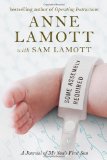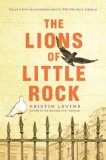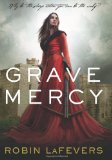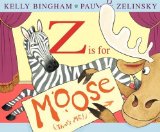Review of Some Assembly Required, by Anne Lamott, with Sam Lamott
A Journal of My Son’s First Son
by Anne Lamott
with Sam Lamott
Riverhead Books, New York, 2012. 272 pages.
Starred Review
I so love Anne Lamott’s writing! She is honest and writes with humor about the failings and foibles we all have. Along the way, a deep faith shines through and a desire to be compassionate to everyone — though she is not afraid to tell us where she is not compassionate at all.
In many ways, Anne Lamott paves the way for me. She’s a little older than me, and her first son was born a year after mine. However, she has become a grandmother before me. In this book, she looks at the beautiful experience of being a grandmother and all the difficulties of letting her son be a father without undue interference from her.
There are some beautiful passages about Jax, the miraculous and wonderful grandbaby:
After I was sure he was sleeping soundly, I touched the flush of his cheeks in that light brown skin and traced those bold eyebrows. Of course, like all babies, he wakes up with a startle, slightly groping and low-level graspy, but with no sense of a time bomb about to go off. The beauty of the curve of his head — how it rests in the crook of his elbow — almost makes me want to flog myself, out of a desperate, unbearable love. All grandparents I’ve mentioned this to have felt this. He’s a Fibonacci spiral, like a nautilus shell — one of those patterns in mathematical expression with a twisting eternal perfection.
Or when she tells Jax the Secret of Life:
Dear Jax: Yesterday was your first Thanksgiving, and it is time for me to impart to you the secret of life. You will go through your life thinking there was a day in second grade that you must have missed, when the grown-ups came in and explained everything important to the other kids. They said: “Look, you’re human, you’re going to feel isolated and afraid a lot of the time, and have bad self-esteem, and feel uniquely ruined, but here is the magic phrase that will take this feeling away. It will be like a feather that will lift you out of that fear and self-consciousness every single time, all through your life.” And then they told the children who were there that day the magic phrase that everyone else in the world knows about and uses when feeling blue, which only you don’t know, because you were home sick the day the grown-ups told the children the way the whole world works.
But there was not such a day in school. No one got the instructions. That is the secret of life. Everyone is flailing around, winging it most of the time, trying to find the way out, or through, or up, without a map. This lack of instruction manual is how most people develop compassion, and how they figure out to show up, care, help and serve, as the only way of filling up and being free. Otherwise, you grow up to be someone who needs to dominate and shame others, so no one will know that you weren’t there the day the instructions were passed out.
I know exactly one other thing that I hope will be useful: that when electrical things stop working properly, ninety percent of the time you can fix them by unplugging the cord for two or three minutes. I’m sure there is a useful metaphor here.
I love the way Sam talks about his son:
It used to be kind of an accident that he could get his feet to his mouth, but now it’s a tool in his movements. He grabs his feet to shift his weight forward, and to sit or roll. Now it’s a lever, to use. He’ll use his feet as a lever, as handles. He’s discovered, “Wow, they’re attached to me. They have weight to them.” It’s evolutionary, and it caught me by surprise because the foot phone seemed like a phase, but it was evolution — him starting the movement process, of rolling over, and rocking forward inch by inch, like someone with no arms. Now you can’t take your eyes off him for a second. He’ll go from being on his back to being on his stomach, with an arm trapped beneath him, and hurt himself. Now if you look away, he can get hurt.
But my favorite is where Anne Lamott reflects about Jesus:
I would say that my deepest spiritual understanding is that God also sees and forgives my smallest detail, even my flickery, prickly, damaged, jealous, vain self, and sees how I get self-righteous and feel either like trash, often, or superior, and like such a scaredy-cat, and God still understands exactly what that feels like. Because God had the experience of being people, through Jesus.
Jesus had his good days and bad days and stomach viruses. Not to mention that on top of it all, he had a mom who had bad days and good days of her own. She’s like me and Amy, like all of us; she would have been as hormonal, too. And she must have been jealous sometimes of the people Jesus chose to spend time with instead of her. Jealousy is such a toxic virus. “Who are these people? And what do they have that I don’t have?” It’s pretty easy to be deeply selfish when it comes to sharing your child. Even Mary must have been like: “Back off! He’s mine.“
Anne Lamott makes the particular experience of being a grandmother a universal experience that we can all share with her.
Find this review on Sonderbooks at: www.sonderbooks.com/Nonfiction/some_assembly_required.html
Disclosure: I am an Amazon Affiliate, and will earn a small percentage if you order a book on Amazon after clicking through from my site.
Source: This review is based on a library book from the Fairfax County Public Library.
Disclaimer: I am a professional librarian, but I write the posts for my website and blogs entirely on my own time. The views expressed are solely my own, and in no way represent the official views of my employer or of any committee or group of which I am part.









